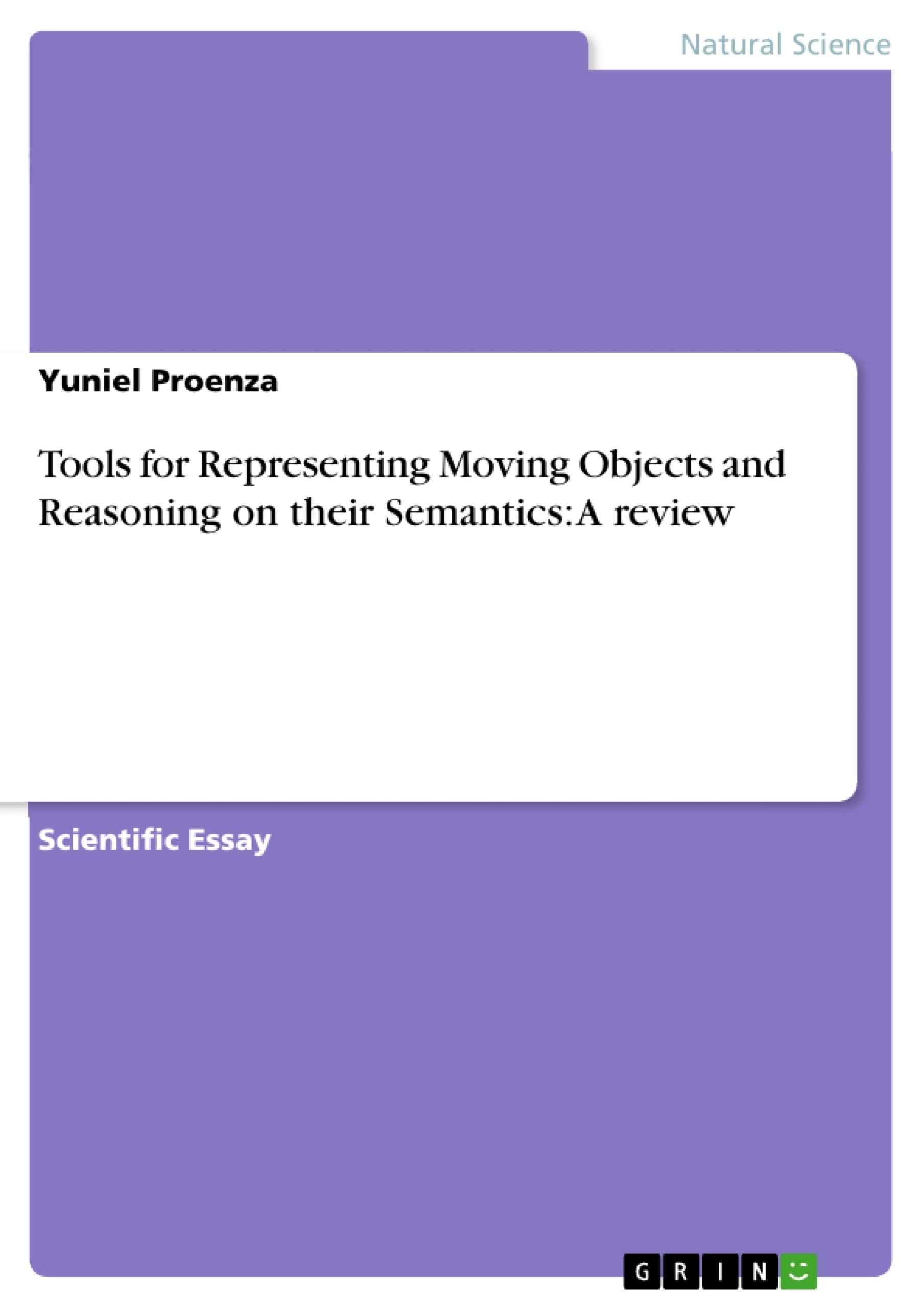The representation and understanding of the movement semantics of moving objects is a key issue for developing more accurate and efficient applications for Location Based
Services, fleet control and so on. This field became very important for researching in the area of Database and Artificial Intelligence. There are many proposals related with algorithms and techniques for this vein, most of them have been implemented on tools, but they are not in sight of researching community and not available for widely usage. In this paper we present a survey on tools for representing moving objects and reasoning on their movement semantics, analyzing proposals from the database context to recent artificial intelligence ones. Our main goal is to clarify the existence and importance of those unknown tools with high impact on representing moving objects considering the semantics of the movement for spatio-temporal analysis.
Inhaltsverzeichnis (Table of Contents)
- I. INTRODUCTION
- II. FOUNDATIONS AND MOTIVATION
- Conceptual and data models
- Location management
- Trajectory analysis
- Movement patterns recognition
- Outliers detection
- Uncertainty treatment
- III. EVALUATING EXISTING TOOLS
- A. Reference framework for evaluation
- B. MADS tools
- MADS Schema Editor
- MADS Query Editor
- MADS Query Viewer
- C. SECONDO
- D. HERMES
- E. MoveMine
- F. DAMSEL (DAta Mining and Semantic Enrichment query Language)
- G. WEKA-STPM
- H. Comparative summary
- IV. DISCUSSION
Zielsetzung und Themenschwerpunkte (Objectives and Key Themes)
This paper aims to provide a comprehensive survey of existing tools that represent and reason about the movement semantics of moving objects. It focuses on tools developed within the database and artificial intelligence fields, addressing their availability, usability, and impact on spatio-temporal analysis.
- Representing and reasoning about movement semantics of moving objects
- Survey of existing tools for spatio-temporal data analysis
- Evaluation framework for tools based on usability, availability, and semantic richness
- Comparison of tools for representing and reasoning about moving objects
- Discussion of the limitations of current tools and future directions for research
Zusammenfassung der Kapitel (Chapter Summaries)
The introduction sets the context for the paper by discussing the importance of understanding movement semantics for applications such as Location Based Services and fleet control. The paper aims to provide a comprehensive overview of tools for representing and reasoning about moving objects.
Chapter II presents the foundations and motivations behind the research area. It discusses key challenges, such as movement pattern recognition, outlier detection, and uncertainty treatment. The chapter reviews relevant conceptual and data models, location management techniques, and trajectory analysis methods.
Chapter III evaluates existing tools for representing and reasoning about moving objects. It introduces a reference framework for evaluation based on usability, semantic richness, availability, and semantic scalability. The chapter analyzes various tools such as MADS tools, SECONDO, HERMES, MoveMine, DAMSEL, and WEKA-STPM, providing a detailed overview of each tool's features and limitations.
Chapter IV discusses the overall findings from the tool analysis. It highlights the strengths and weaknesses of existing tools, emphasizing the need for richer semantic capabilities and wider accessibility for research and industry.
Schlüsselwörter (Keywords)
The paper focuses on the representation and reasoning about moving objects, exploring key concepts such as movement semantics, spatio-temporal analysis, data mining, data models, tools, and semantic enrichment. It examines various tools that implement techniques for analyzing moving objects, including MADS tools, SECONDO, HERMES, MoveMine, DAMSEL, and WEKA-STPM. The research emphasizes the need for more semantically rich and accessible tools for understanding movement semantics.
- Quote paper
- Proff. Yuniel Proenza (Author), 2014, Tools for Representing Moving Objects and Reasoning on their Semantics: A review, Munich, GRIN Verlag, https://www.grin.com/document/288460



